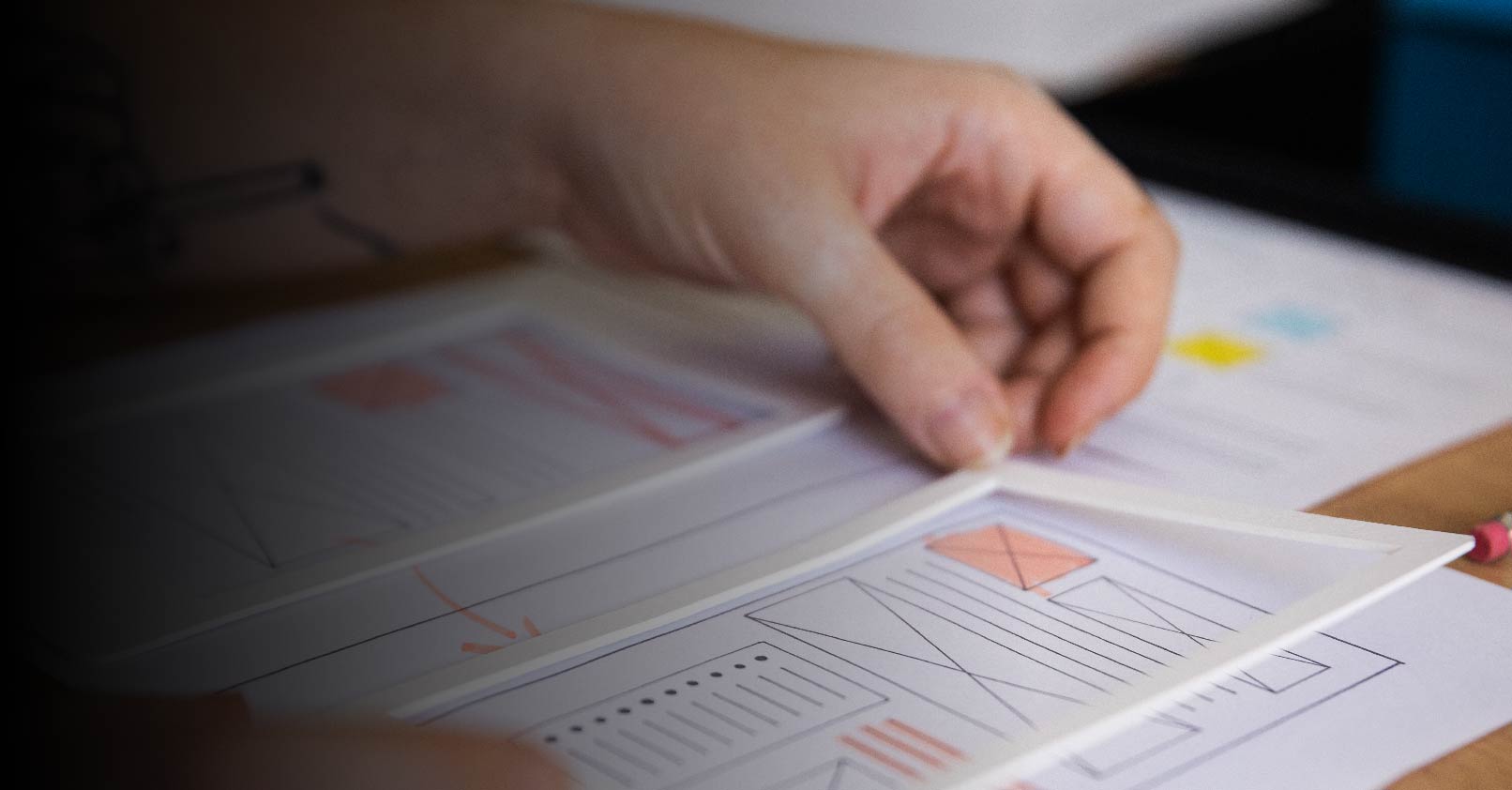Do you have a hard & stressful time attracting your audience with UI & UX design? Looking to outshine the crowd & deliver tangible results? We are here with our latest & detailed guide on UI/UX design services.
In the present tech world, UI/UX design is a universal necessity. A quality interface means a top-notch user experience & helps in increasing conversions. With Worxwide– a UI UX design firm, you will get into the depths & take you through the different components of UI/UX Design.
With our valuable assistance, gain all the insights, tips, practices & more on creating a user-centric UI/UX design. Buckle up to delight users & achieve your business objectives.
What is UI UX Design?
UI/UX design is the practice of creating aesthetically pleasing & highly functional digital interfaces. User Interface (UI) refers to how the product looks & interacts with your users. User Experience (UX) focuses on the overall experience & engagement that users have when using a product.
UI UX agencies work in line with developers & stakeholders to create products that fulfil the needs of users. They consider many different factors running from user behavior, and psychology to demographics. Thereby, you can design easy-to-use and visually engaging user interfaces.
A well-designed UI/UX can vastly improve user engagement, boost consumer satisfaction & even conversion rates. It is a vital aspect of any digital product development process if you wish to make it a success.
Trending Types of UI UX Design
When we talk about UI UX design, we will surely get into its different types that anyone can choose from. Below, here we have the most common types of UI UX design:
- Flat Design: This type of UI UX design has the characteristics of being a simplistic & minimalistic approach. It primarily focuses on making the interface clean, simple, user-friendly & easy to navigate.
- Material Design: Developed by Google, this design type has an emphasis on using visual cues & animations to provide users with a more natural & intuitive experience.
- Skeuomorphic Design: This type of design aims to mimic real-world objects & physicality in the digital world & makes the interface more relatable & understandable.
- Responsive Design: With the increasing prevalence of mobile devices, UI UX designers need to guarantee that their designs are responsive, adaptable & effective across various screen sizes.
- Dark Mode Design: This design type adjusts the interface to a darker color scheme. It reduces strain on your eyes & thereby, improves readability, especially in low-light conditions.
Along with these designs, you must make sure that your website is responsive & there are no bugs with your loading times. A report by Forbes concluded that the loss of 1 second in page loading time equals 11% fewer page views, 16% lower customer satisfaction & 7% lower conversion rates.
Whether you are looking for UI UX design services or in search of a reliable UI UX design company, it is crucial to choose the right type of design that suits your project’s goals & users’ needs.
UI Design Vs UX Design: Differences to Know
UI design & UX design have become buzzwords in the software & web development industry in recent times. Although they are often used interchangeably, UI design & UX design are two different user experience concepts that work closely together to create an optimal user experience & user interface.
| UI Design | UX Design |
| Focuses on the appearance of the product | Emphasizes the overall experience of the product |
| Deals with the visual aspect of the product | Concentrates on how the user interacts with the product |
| Includes the use of typography, color scheme & visual hierarchy | Involves user research, wireframing & prototyping |
| Concerned with making the product visually appealing & appealing to the user | Engaged with optimizing the product intuitive & user-friendly |
| Involves the use of graphic design tools like Photoshop, Sketch & Illustrator | Requires user experience concepts like empathy, usability, & accessibility |
Both of these design elements are quite crucial for a successful product. By incorporating user experience concepts into UI design, designers can easily create a user-friendly product.
UI/UX Design Elements Every Designer Must Master
The world of user experience design is an exciting & ever-evolving field that requires designers to be constantly updated about the latest trends, tools & techniques. Thus, it becomes vital to keep yourself familiar with the below essential UI/UX design elements:
- User Persona: A user persona can be understood as a fictional representation of your target audience. Understanding the user’s needs, motivations & behaviors helps in creating personalized & user-centric designs.
- Information Architecture (IA): It is the process to organize, categorize & label the content. A well-structured IA aids in an effortless user experience.
- Wireframing: Wireframing means creating a visual representation of the interface before design. It assists in a swift brainstorming & ideation process.
- Prototyping: Prototyping is an iterative process that works towards creating & testing the design concepts quickly. It is crucial to test & validate the design in a fast-paced environment.
- Visual Design: The visual design includes visual aesthetics, typography & color selection. It plays a significant role in creating an impactful & user-friendly design.
- Interaction Design: Interaction design focuses on the behavior & actions of the user interface. It means designing user flows, animations, micro-interactions & other elements that make the application engaging for the user.
- Accessibility: Accessibility is the process of designing the UI/UX to consider people with disabilities. It is quite vital to make the design accessible to users with different needs.
Partnering with a reliable UI UX design agency can help ensure that these critical design elements are appropriately implemented. With their vast expertise, any UI UX design & development services can help create interfaces that deliver unparalleled user experiences.
Best Practices for Crafting an Outstanding User Experience
To assist you in creating an excellent user experience, we have compiled the following best UX/UI design solution & practices:
- Identify User Goals: Begin the design process by identifying your users’ needs & goals. Conduct market research to determine what motivates your users & what they aim to achieve with your product or service. This information will guide how you design the user experience, ensuring that it’s built around user needs.
- Keep Your User Interface Simple: A complicated & cluttered interface can be overwhelming for users. Keeping the UI simple boosts the user experience & makes it quite easy for users to navigate through, search & find what they need. Keep all your design elements to a bare minimum. This means an easy to understand navigation & user retention.
- Use Consistent Design: Consistency is the core in user experience design. It helps your users navigate, sneak peek & use your product & service with ease. Consistent use of typography, color schemes & other design elements is a must as the users don’t get confused & disoriented when moving from one location to another.
- Make it Mobile-Friendly: Mobile devices are becoming more prevalent. All the users seek convenience on the go. Thus, it’s vital to design your UI/UX with a mobile-first approach. Your designs should work perfectly on mobile devices & must be easy to use on these smaller screens. As per reports, It is 5 times more likely that users will abandon a task if the site isn’t mobile-friendly, with 79 percent saying they will revert to the search engine and try another site.
- Provide Useful Feedback: Feedback is critical for users to understand their actions & the result of those actions. Leveraging visual or auditory cues provide useful feedback to users.
- Use Strong Visuals: Strong visuals can better the user experience & make your product or service memorable. Use high-quality images & videos, compelling illustrations, & typography to create engaging visuals that make the user experience more impactful.
How the Relationship Between UI & UX Design Boosts User Experience?
The interplay of user interface (UI) & user experience (UX) has become the key in building digital products that offer exceptional experiences.It is crucial for executives to embrace UX improvements because it helps to stand out of the competition & they can even help the company’s bottom line. Forrester (paid report) found that UX investments generate an average return of $100 for every dollar spent. This is a return on investment of 9,900%.
UI & UX design work together to give users an effective experience. Successful UI design hinges on considering the consumer’s needs & preferences, emphasizing clarity & maintaining consistency in the product’s design. It entails designing easy to navigate interfaces. UX design, on the other hand, focuses on creating an enjoyable experience making it fulfilling for the user.
UI & UX work together to create better user experiences in various ways. For instance, using UX research can improve the understanding of needs, feedback, & challenges. This info. can feed into the UI design process & results in a design that accommodates the user’s preferences & goals. Through prototyping & testing, designers can refine the design so that it reflects the users’ desires. This makes sure that users can easily interact with a digital product & even with minimal guidance or support.
The combination of UI & UX design ultimately aims to create functional digital products & make it efficient for users. This approach requires designers to empathize with the user, integrate their needs and challenges into their design process.
How to Avoid Typical User Interface Mistakes?
Designing a user interface is surely a challenging task, & even the most experienced designers & experts make mistakes from time to time. In our next section, we will take a deeper look at some common & typical mistakes to avoid when designing a top-quality user interface.
- Cluttered Interface
A cluttered interface will only cause confusion & frustration for users. Over complicating the interface with too much information, too many buttons & too many elements can overwhelm visitors & make them feel lost & discouraged. To avoid this mistake, focus on simplifying the interface as much as possible. Use whitespace, declutter the menus & remove any unnecessary components.
- Unclear Navigation
Navigation is the backbone of your user interface, & if visitors are unable to find what they are looking for, they won’t stick around for long. Avoid using vague or confusing navigation labels & ensure that menu options are clear & concise. Place the navigation menu in a consistent location across all pages of the website.
- Inconsistent Layouts
As mentioned above, consistency is key when it comes to the user interface. Elements such as color, fonts & graphics should remain uniform throughout the entire platform. Inconsistent layouts will make your interface appear sloppy & unprofessional.
- Overloading Users with Information
Visitors to your website or application don’t want to read through long blocks of text. It’s essential to keep the information concise, engaging & easy to understand. Use clear, legible fonts & break up the content into small chunks, each with its heading.
- Ignoring User Needs
One of the most common mistakes you can make is to design a user interface without considering the needs of your users. By taking the time to do some user research & testing, you can identify & address user needs, which will subsequently increase satisfaction rates.
Final Thoughts
UI/UX design can seem overwhelming at first, but with the right knowledge & resources, it’s an achievable skill. Many tools can be utilized to create effective user interfaces & high quality experiences for users. Don’t forget the importance of communication, either—collaboration is key to balancing user needs & business objectives. Now that you’ve read our guide to effective UI/UX Design, you’re well on your way to honing your design skills & refining your design processes.
But you don’t have to do it alone – partner with a top UX design agencies & get the help you need to create an engaging & interactive user experience. Not only will your users be more effectively able to carry out tasks on your site, but they’ll also enjoy using it even more.
Don’t put yourself at risk! Take these steps today if you want to get the best out of your investment as an online business owner.
FAQs
Q1. What makes a good UI UX design?
A good UI UX design should be consistent throughout, easy for users to understand & reflect the brand’s identity. A well-designed interface should provide clear instructions & be intuitive and familiar. Staying up to date on the latest UI UX design concepts & trends can help in making sure your design is effective & achieves its intended goals.
Q2. What are the main goals of UI UX?
UI UX has 2 primary goals: (i) to make products easy to use; (ii) to provide a positive experience for the user. By achieving both of these goals, UX design helps to improve customer satisfaction & loyalty. All in all, the goal is to create a product that people enjoy using & find useful. That will lead to increased sales & revenue for businesses.
Q3. What is the basic knowledge for a UI UX designer?
For aspiring UI/UX Designers, it’s vital to have a good grasp of design principles & creativity. To excel in this field, it’s also necessary to have a basic understanding of user research, technical constraints & prototyping tools.
Worxwide Consulting, a top management consulting firms that help companies drive digital growth by improving user and customer experience. We help companies with end-to-end product design or UX design services that include research, strategy, design, test product designs and prototypes. Worxwide based out of US, UK, and India offering bid consulting, sales transformation, user experience and customer experience design services.
tx, USA

London, UK

India


